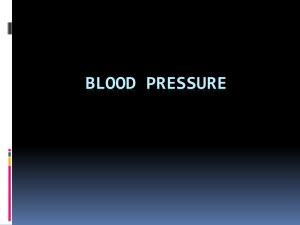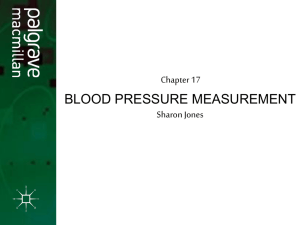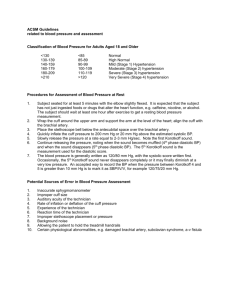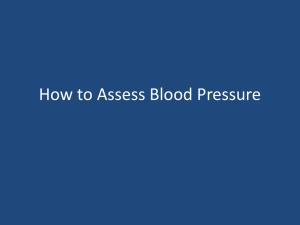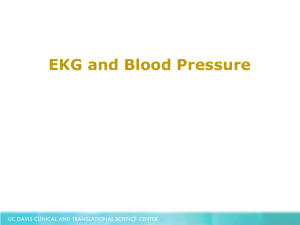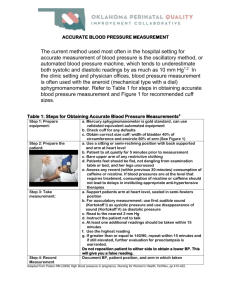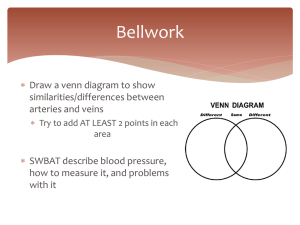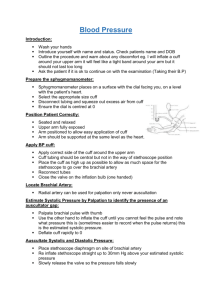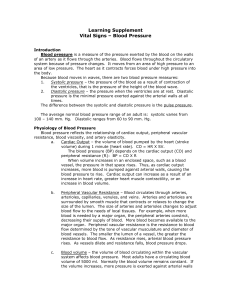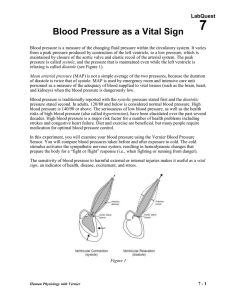BP - Kalaheo High School
advertisement
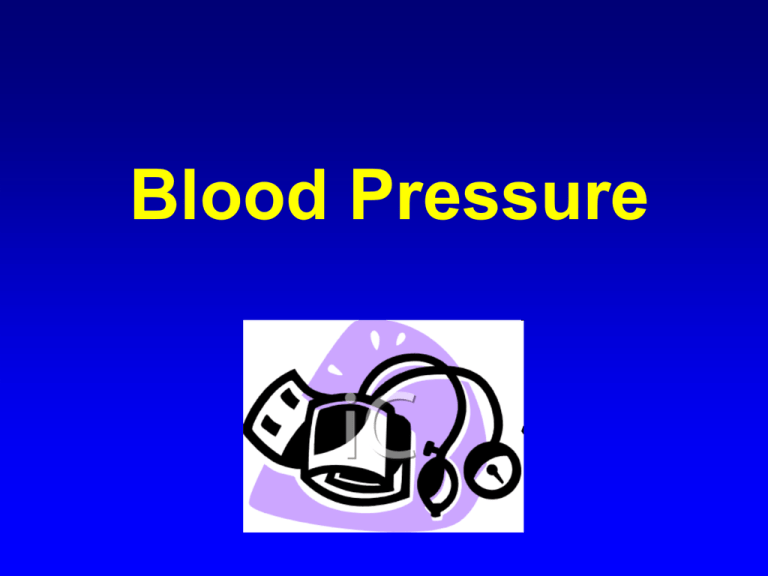
Blood Pressure Blood Pressure is… • The force exerted against blood vessel walls • Responsible for the flow of blood • The result of: – Pumping action of the heart – Resistance of the blood vessels – Volume of blood Pumping action of the heart… • • • • Systolic phase Systole Ventricles contract Blood Flows out of the heart Pumping action of the heart • Diastolic phase • Diastole • Heart relaxes Blood pressure is recorded… • As a fraction ie. 120/80 • Systolic pressure is the numerator – The first sound heard • Diastolic pressure is the denominator – The change of sound or the last sound heard Blood pressure sounds are… • Auscultated through a stethoscope • Sounds are correlated with the readings on a sphygmomanometer • Blood pressure is recorded in millimeters of mercury (mm Hg) Blood Pressure Variations… • Determine baseline – From medical record – Systolic palpated pressure • Hypertension – High blood pressure • Hypotension – Low blood pressure • Orthostatic hypotension – Decrease in B/P with position change (from supine to erect) Aneroid Sphygmomanometer • Use proper cuff width • Width should be approximately 80% of arm circumference • Place stethoscope under cuff at the brachial pulse location Mercury sphygmomanometer Korotkoff Sounds • Sounds auscultated while assessing BP • 5 phases – Phase I: first sound, sharp tapping sound – systolic pressure – Phase II: soft swishing sound – Phase III: rhythmic tapping sound – Phase IV: muffling/fading of tapping sound – Phase V: point at which all sounds disappear – diastolic pressure Trouble-shooting • False high reading – – – – Cuff too small Cuff too loose Slow cuff deflation Column or dial not at eye level – Poorly timed (anxiety, exercise, after eating) • Take BP first in infant or small child Trouble-shooting • False low reading: • Incorrect position of arm or leg – Position at heart level • Failure to notice auscultatory gap – Sounds fade out for 10 to 15 mm Hg then return • Inaudibility of low volume sounds • Column or dial not at eye level Normal, Low & High BP • Normal blood Pressure: Top number is consistently under 120 and bottom number under 80 • Low BP (hypotension): Top number lower than 90 or 25mm Hg lower than usual • Pre-high BP (pre-hypertension): Top number is consistently 120 – 139 or the bottom number reads 80 – 89 • Stage 1 high BP (hypertension): Top number is consistently 140 – 159 or the bottom number reads 90 – 99 • Stage 2 high BP (hypertension): Top number is consistently 160 or over or the bottom number reads 100 or over Blood pressure readings… • Use same arm for readings • Do not take BP on arm with: – – – – – An IV Paralysis Injury A-V shunt Edema Causes of high BP • Modifiable Risk Factors – – – – – – Lack of exercise Obesity Excessive sodium Tobacco Alcohol stress • Non-Modifiable Risk factors • Age (men over 45, women over 55) • Race • heredity
